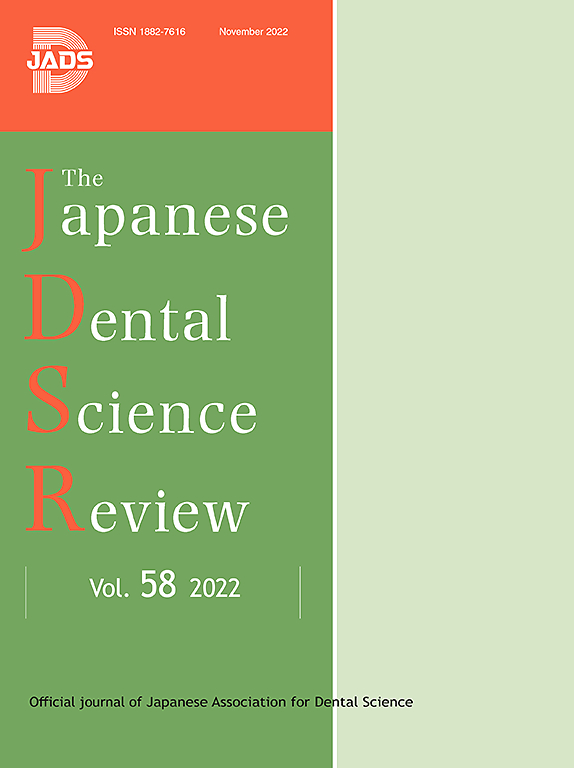Interplay between survival and regulated cell death mechanisms during periodontitis progression: a systematic review
IF 6.6
2区 医学
Q1 DENTISTRY, ORAL SURGERY & MEDICINE
引用次数: 0
Abstract
Regulated cell death (RCD) and survival pathways have emerged as critical factors in periodontal tissue breakdown. However, their precise roles and interactions remain poorly understood. This systematic review aimed to synthesize current evidence regarding the involvement of RCD and survival mechanisms in the progression of periodontitis. A systematic literature search was conducted in PubMed/MEDLINE, Web of Science and Scopus, complemented by manual searching in Google Scholar, following PRISMA guidelines. After removing duplicates, 549 studies underwent title and abstract screening. Of these, 56 articles were selected for full-text review and 18 studies met the eligibility criteria and were included in the final synthesis. Ferroptosis, pyroptosis and necroptosis were consistently associated with inflammatory exacerbation, alveolar bone loss and disease progression. In contrast, autophagy and apoptosis exhibited dual roles—protective or destructive—depending on cell types, disease stage and experimental conditions. Most studies utilized ligature-induced periodontitis animal models. Several studies also demonstrated the therapeutic potential of modulating specific RCD pathways to control inflammation and promote periodontal tissue regeneration, highlighting possible translational strategies for host-modulation therapy of periodontitis. This systematic review consolidates the pivotal role of RCD in the progression of periodontitis. Targeting RCD pathways may represent novel therapeutic strategies to reduce periodontal inflammation and tissue destruction.
在牙周炎进展过程中,存活和调节细胞死亡机制之间的相互作用:一项系统综述
调节细胞死亡(RCD)和存活途径已成为牙周组织破坏的关键因素。然而,它们的确切作用和相互作用仍然知之甚少。本系统综述旨在综合目前关于RCD在牙周炎进展中的参与和生存机制的证据。在PubMed/MEDLINE、Web of Science和Scopus中进行了系统的文献检索,并在谷歌Scholar中进行了人工检索,遵循PRISMA指南。在去除重复项后,549项研究进行了标题和摘要筛选。其中,56篇文章被选择进行全文审查,18篇研究符合资格标准,并被纳入最终的综合。铁下垂、焦下垂和坏死性下垂始终与炎症加重、牙槽骨丢失和疾病进展相关。相反,自噬和凋亡表现出保护或破坏的双重作用,这取决于细胞类型、疾病阶段和实验条件。大多数研究使用结扎性牙周炎动物模型。几项研究也证明了调节特定RCD通路控制炎症和促进牙周组织再生的治疗潜力,强调了宿主调节治疗牙周炎的可能的翻译策略。本系统综述巩固了RCD在牙周炎进展中的关键作用。靶向RCD通路可能是减少牙周炎症和组织破坏的新治疗策略。
本文章由计算机程序翻译,如有差异,请以英文原文为准。
求助全文
约1分钟内获得全文
求助全文
来源期刊

Japanese Dental Science Review
DENTISTRY, ORAL SURGERY & MEDICINE-
CiteScore
9.90
自引率
1.50%
发文量
31
审稿时长
32 days
期刊介绍:
The Japanese Dental Science Review is published by the Japanese Association for Dental Science aiming to introduce the modern aspects of the dental basic and clinical sciences in Japan, and to share and discuss the update information with foreign researchers and dentists for further development of dentistry. In principle, papers are written and submitted on the invitation of one of the Editors, although the Editors would be glad to receive suggestions. Proposals for review articles should be sent by the authors to one of the Editors by e-mail. All submitted papers are subject to the peer- refereeing process.
 求助内容:
求助内容: 应助结果提醒方式:
应助结果提醒方式:


